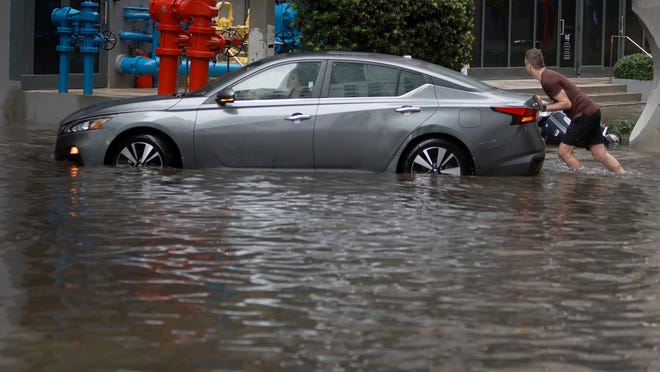Peak hurricane season is here, and while it’s been slow so far, named storms could still form off the coast of the U.S. until December.
Hurricane season in the Atlantic Ocean began June 1 and will continue through Nov. 30, with peak hurricane possibilities remaining through September.
The first few months of hurricane season have been relatively quiet. Tropical Storm Alex hit South Florida, Cuba and the Bahamas on the first weekend of June. Hurricane Danielle was the first hurricane to appear in 2022 and Hurricane Earl arrived shortly afterwards.
None of the named storms hit the U.S. as a hurricane. Tropical Storm Kay caused heavy rain, flash floods warnings and strong winds in California in September, but that storm was part of the Eastern North Pacific hurricane season.
Here’s what to know about tropical storm and hurricane names:
- Names have been used for tropical storms and hurricanes since 1953.
- Names are used in case two storms happen at the same time, so people aren’t confused or misled.
- The names are decided well in advance and sometimes recycled.
For subscribers: August hasn’t been this devoid of tropical storms since 1997. Is hurricane season over?
Unusually warm temperatures in one of world’s coolest regions:September heat blazed across North Atlantic, melting ice and fueling Hurricane Danielle
Who decides the names? Why do tropical storms and hurricanes get names?
The names are decided “through a strict procedure” by the World Meteorological Organization, based in Geneva.
The WMO said that originally, storms were named after buildings or structures they damaged, or they were named by where they were located. That could make it hard to follow if the storm moved across a region.
“Tropical cyclones can last for a week or more; therefore, there can be more than one cyclone at a time. Weather forecasters give each tropical cyclone a name to avoid confusion,” the WMO said.
In 1953, the National Hurricane Center began using female names for Atlantic storms. Male names were added to the cycle in 1979, and male and females names alternated through the alphabet, though there are no names that begin with Q, U, X, Y or Z. There is a separate list of names for storms in the Pacific and other parts of the world.
A storm gets named when it has sustained winds of 39 mph. A storm becomes a hurricane when it reaches winds of 74 mph.
Tropical storm and hurricane names for 2022:
A name will be retired “if a storm is so deadly or costly that the future use of its name for a different storm would be inappropriate for reasons of sensitivity,” according to the World Meteorological Organization.
Ninety-four names have been retired, including Ida, which was retired in April because of the death and destruction the hurricane caused in 2021.
If a storm name is not retired, it is recycled every six years, so this year’s names could be used again in 2028.
What if all the names get used?
Greek letters, such as Alpha, Beta and Gamma, were used as supplemental names until the World Meteorological Organization scrapped that practice in 2021.
If all the names are used in 2022, here are backups:
- Adria
- Braylen
- Caridad
- Deshawn
- Emery
- Foster
- Gemma
- Heath
- Isla
- Jacobus
- Kenzie
- Lucio
- Makayla
- Nolan
- Orlanda
- Pax
- Ronin
- Sophie
- Tayshaun
- Viviana
- Will
Contributing: Doyle Rice, USA TODAY
Follow Jordan Mendoza on Twitter: @jordan_mendoza5.


